This site uses cookies as defined in our Cookie Policy, by continuing to use this site you agree to their use.
Continue
| Arrive | Depart | ||||||
| 16th16 | AugAug | 202525 | Piraeus, Greece, embark on the EXPLORA I | 19:00 | |||
It's no wonder that all roads lead to the fascinating and maddening metropolis of Athens. Lift your eyes 200 feet above the city to the Parthenon, its honey-color marble columns rising from a massive limestone base, and you behold architectural perfection that has not been surpassed in 2,500 years. But, today, this shrine of classical form dominates a 21st-century boomtown. To experience Athens—Athína in Greek—fully is to understand the essence of Greece: ancient monuments surviving in a sea of cement, startling beauty amid the squalor, tradition juxtaposed with modernity. Locals depend on humor and flexibility to deal with the chaos; you should do the same. The rewards are immense. Although Athens covers a huge area, the major landmarks of the ancient Greek, Roman, and Byzantine periods are close to the modern city center. You can easily walk from the Acropolis to many other key sites, taking time to browse in shops and relax in cafés and tavernas along the way. From many quarters of the city you can glimpse "the glory that was Greece" in the form of the Acropolis looming above the horizon, but only by actually climbing that rocky precipice can you feel the impact of the ancient settlement. The Acropolis and Filopappou, two craggy hills sitting side by side; the ancient Agora (marketplace); and Kerameikos, the first cemetery, form the core of ancient and Roman Athens. Along the Unification of Archaeological Sites promenade, you can follow stone-paved, tree-lined walkways from site to site, undisturbed by traffic. Cars have also been banned or reduced in other streets in the historical center. In the National Archaeological Museum, vast numbers of artifacts illustrate the many millennia of Greek civilization; smaller museums such as the Goulandris Museum of Cycladic Art Museum and the Byzantine and Christian Museum illuminate the history of particular regions or periods. Athens may seem like one huge city, but it is really a conglomeration of neighborhoods with distinctive characters. The Eastern influences that prevailed during the 400-year rule of the Ottoman Empire are still evident in Monastiraki, the bazaar area near the foot of the Acropolis. On the northern slope of the Acropolis, stroll through Plaka (if possible by moonlight), an area of tranquil streets lined with renovated mansions, to get the flavor of the 19th-century's gracious lifestyle. The narrow lanes of Anafiotika, a section of Plaka, thread past tiny churches and small, color-washed houses with wooden upper stories, recalling a Cycladic island village. In this maze of winding streets, vestiges of the older city are everywhere: crumbling stairways lined with festive tavernas; dank cellars filled with wine vats; occasionally a court or diminutive garden, enclosed within high walls and filled with magnolia trees and the flaming trumpet-shaped flowers of hibiscus bushes. Formerly run-down old quarters, such as Thission, Gazi and Psirri, popular nightlife areas filled with bars and mezedopoleia (similar to tapas bars), are now in the process of gentrification, although they still retain much of their original charm, as does the colorful produce and meat market on Athinas. The area around Syntagma Square, the tourist hub, and Omonia Square, the commercial heart of the city about 1 km (½ mi) northwest, is distinctly European, having been designed by the court architects of King Otho, a Bavarian, in the 19th century. The chic shops and bistros of ritzy Kolonaki nestle at the foot of Mt. Lycabettus, Athens's highest hill (909 feet). Each of Athens's outlying suburbs has a distinctive character: in the north is wealthy, tree-lined Kifissia, once a summer resort for aristocratic Athenians, and in the south and southeast lie Glyfada, Voula, and Vouliagmeni, with their sandy beaches, seaside bars, and lively summer nightlife. Just beyond the city's southern fringes is Piraeus, a bustling port city of waterside fish tavernas and Saronic Gulf views. Athenians don’t live in the past. Ahead of its time, Athens exudes glamour and a sense of possibility - housing galleries, gelaterias, bijoux boutiques alongside a plethora of museums. And you can’t help but marvel at the archaeological wonders of the Acropolis and the Parthenon. Stroll through vibrant streets and markets, dance at buzzing bouzoukia, sing along in tavernas. At night, head to the harbour, where dimly lit bars serve the local ice cold beer. And, as you inhale the salty air and watch Greek fishing boats peacefully depart for their catch, reflect on this ancient city's progressive attitude. | |||||||
| 17th17 | AugAug | 202525 | Mykonos, Greece | 09:00 | |||
Although the fishing boats still go out in good weather, Mykonos largely makes its living from tourism these days. The summer crowds have turned one of the poorest islands in Greece into one of the richest. Old Mykonians complain that their young, who have inherited stores where their grandfathers once sold eggs or wine, get so much rent that they have lost ambition, and in summer sit around pool bars at night with their friends, and hang out in Athens in winter when island life is less scintillating. Put firmly on the map by Jackie O in the 1960s, Mykonos town—called Hora by the locals—remains the Saint-Tropez of the Greek islands. The scenery is memorable, with its whitewashed streets, Little Venice, the Kato Myli ridge of windmills, and Kastro, the town's medieval quarter. Its cubical two- or three-story houses and churches, with their red or blue doors and domes and wooden balconies, have been long celebrated as some of the best examples of classic Cycladic architecture. Luckily, the Greek Archaeological Service decided to preserve the town, even when the Mykonians would have preferred to rebuild, and so the Old Town has been impressively preserved. Pink oleander, scarlet hibiscus, and trailing green pepper trees form a contrast amid the dazzling whiteness, whose frequent renewal with whitewash is required by law. Any visitor who has the pleasure of getting lost in its narrow streets (made all the narrower by the many outdoor stone staircases, which maximize housing space in the crowded village) will appreciate how its confusing layout was designed to foil pirates—if it was designed at all. After Mykonos fell under Turkish rule in 1537, the Ottomans allowed the islanders to arm their vessels against pirates, which had a contradictory effect: many of them found that raiding other islands was more profitable than tilling arid land. At the height of Aegean piracy, Mykonos was the principal headquarters of the corsair fleets—the place where pirates met their fellows, found willing women, and filled out their crews. Eventually the illicit activity evolved into a legitimate and thriving trade network. Morning on Mykonos town's main quay is busy with deliveries, visitors for the Delos boats, lazy breakfasters, and street cleaners dealing with the previous night's mess. In late morning the cruise-boat people arrive, and the shops are all open. In early afternoon, shaded outdoor tavernas are full of diners eating salads (Mykonos's produce is mostly imported); music is absent or kept low. In mid- and late afternoon, the town feels sleepy, since so many people are at the beach, on excursions, or sleeping in their air-conditioned rooms; even some tourist shops close for siesta. By sunset, people have come back from the beach, having taken their showers and rested. At night, the atmosphere in Mykonos ramps up. The cruise-boat people are mostly gone, coughing three-wheelers make no deliveries in the narrow streets, and everyone is dressed sexy for summer and starting to shimmy with the scene. Many shops stay open past midnight, the restaurants fill up, and the bars and discos make ice cubes as fast as they can. Ready to dive in? Begin your tour of Mykonos town (Hora) by starting out at its heart: Mando Mavrogenous Square. If you start early, you’ll have Mykonos to yourself. Stroll narrow streets famous for Cycladic architecture and getting lost; white-washed cubed buildings, alluring boutiques, orthodox churches and traditional windmills. Join glitterati guests at elegant events on iconic beaches, sink into saltwater pools, tour vineyards and dance at bars where beats evolve in tempo (and volume). When the heat of the day dies down, drop into the sacred isle of Delos to explore remarkable ruins; amphitheatres, temples, public squares, marketplaces and shrines to Greek Gods. Take a table in central Chora for perfectly-cooked, local dishes with generous views; mounds of flaky filo, Greek salads, halloumi and sea urchin, washed down with freddo. When the sun sets, head for a signature sundowner with views across the ocean. After dark, follow the fun to legendary bars and clubs. Progressive and profoundly beautiful. | |||||||
| 18th18 | AugAug | 202525 | Mykonos, Greece | 01:00 | |||
Although the fishing boats still go out in good weather, Mykonos largely makes its living from tourism these days. The summer crowds have turned one of the poorest islands in Greece into one of the richest. Old Mykonians complain that their young, who have inherited stores where their grandfathers once sold eggs or wine, get so much rent that they have lost ambition, and in summer sit around pool bars at night with their friends, and hang out in Athens in winter when island life is less scintillating. Put firmly on the map by Jackie O in the 1960s, Mykonos town—called Hora by the locals—remains the Saint-Tropez of the Greek islands. The scenery is memorable, with its whitewashed streets, Little Venice, the Kato Myli ridge of windmills, and Kastro, the town's medieval quarter. Its cubical two- or three-story houses and churches, with their red or blue doors and domes and wooden balconies, have been long celebrated as some of the best examples of classic Cycladic architecture. Luckily, the Greek Archaeological Service decided to preserve the town, even when the Mykonians would have preferred to rebuild, and so the Old Town has been impressively preserved. Pink oleander, scarlet hibiscus, and trailing green pepper trees form a contrast amid the dazzling whiteness, whose frequent renewal with whitewash is required by law. Any visitor who has the pleasure of getting lost in its narrow streets (made all the narrower by the many outdoor stone staircases, which maximize housing space in the crowded village) will appreciate how its confusing layout was designed to foil pirates—if it was designed at all. After Mykonos fell under Turkish rule in 1537, the Ottomans allowed the islanders to arm their vessels against pirates, which had a contradictory effect: many of them found that raiding other islands was more profitable than tilling arid land. At the height of Aegean piracy, Mykonos was the principal headquarters of the corsair fleets—the place where pirates met their fellows, found willing women, and filled out their crews. Eventually the illicit activity evolved into a legitimate and thriving trade network. Morning on Mykonos town's main quay is busy with deliveries, visitors for the Delos boats, lazy breakfasters, and street cleaners dealing with the previous night's mess. In late morning the cruise-boat people arrive, and the shops are all open. In early afternoon, shaded outdoor tavernas are full of diners eating salads (Mykonos's produce is mostly imported); music is absent or kept low. In mid- and late afternoon, the town feels sleepy, since so many people are at the beach, on excursions, or sleeping in their air-conditioned rooms; even some tourist shops close for siesta. By sunset, people have come back from the beach, having taken their showers and rested. At night, the atmosphere in Mykonos ramps up. The cruise-boat people are mostly gone, coughing three-wheelers make no deliveries in the narrow streets, and everyone is dressed sexy for summer and starting to shimmy with the scene. Many shops stay open past midnight, the restaurants fill up, and the bars and discos make ice cubes as fast as they can. Ready to dive in? Begin your tour of Mykonos town (Hora) by starting out at its heart: Mando Mavrogenous Square. If you start early, you’ll have Mykonos to yourself. Stroll narrow streets famous for Cycladic architecture and getting lost; white-washed cubed buildings, alluring boutiques, orthodox churches and traditional windmills. Join glitterati guests at elegant events on iconic beaches, sink into saltwater pools, tour vineyards and dance at bars where beats evolve in tempo (and volume). When the heat of the day dies down, drop into the sacred isle of Delos to explore remarkable ruins; amphitheatres, temples, public squares, marketplaces and shrines to Greek Gods. Take a table in central Chora for perfectly-cooked, local dishes with generous views; mounds of flaky filo, Greek salads, halloumi and sea urchin, washed down with freddo. When the sun sets, head for a signature sundowner with views across the ocean. After dark, follow the fun to legendary bars and clubs. Progressive and profoundly beautiful. | |||||||
| 18th18 | AugAug | 202525 | Pátmos, Greece | 10:00 | 18:00 | ||
For better or worse, it can be difficult to reach Patmos—for many travelers, this lack of access is definitely for the better, since the island retains the air of an unspoiled retreat. Rocky and barren, the small, 34-square-km (21-square-mi) island lies beyond the islands of Kalymnos and Leros, northwest of Kos. Here on a hillside is the Monastery of the Apocalypse, which enshrines the cave where St. John received the Revelation in AD 95. Scattered evidence of Mycenaean presence remains on Patmos, and walls of the classical period indicate the existence of a town near Skala. Most of the island's approximately 2,800 people live in three villages: Skala, medieval Chora, and the small rural settlement of Kambos. The island is popular among the faithful making pilgrimages to the monastery as well as with vacationing Athenians and a newly growing community of international trendsetters—designers, artists, poets, and “taste gurus” (to quote Vogue’s July 2011 write-up of the island)—who have bought homes in Chora. These stylemeisters followed in the footsteps of Alexandrian John Stefanidis and the English artist Teddy Millington-Drake who, in the early ’60s, set about creating what eventually became hailed as one of the most gorgeous island homes in the world. The word soon spread thanks to their many guests (who included Jacqueline Kennedy Onassis) but, happily, administrators have carefully contained development, and as a result, Patmos retains its charm and natural beauty—even in the busy month of August. A tiny island with a big reputation. Voyage to this discreet island where few go. Famed for being the discerning guests’ paradise; sun-kissed beaches, clear waters shielded by protective coves and undeniably warm local hospitality. Classically Greek with beautiful, mountainous views of perfectly positioned white houses dotted high into the hills. Known as the Land of Legends, St John was said to have written his Book of Revelations here. Quiet but with a powerful energy, you’ll understand why this island was named "Letois", after the goddess and huntress of deer, Artemis, daughter of Leto. It was believed that Patmos came into existence thanks to her divine intervention. | |||||||
| 19th19 | AugAug | 202525 | Vólos, Greece | 09:00 | 21:00 | ||
| 20th20 | AugAug | 202525 | Thessaloníki, Greece | 09:00 | 20:00 | ||
| 21st21 | AugAug | 202525 | Kavala, Greece | 09:00 | 20:00 | ||
| 22nd22 | AugAug | 202525 | At Sea | ||||
| 23rd23 | AugAug | 202525 | Istanbul, Turkey | 07:00 | 23:55 | ||
The only city in the world that can lay claim to straddling two continents, Istanbul—once known as Constantinople, capital of the Byzantine and then the Ottoman Empire—has for centuries been a bustling metropolis with one foot in Europe and the other in Asia. Istanbul embraces this enviable position with both a certain chaos and inventiveness, ever evolving as one of the world’s most cosmopolitan crossroads. It’s often said that Istanbul is the meeting point of East and West, but visitors to this city built over the former capital of two great empires are likely to be just as impressed by the juxtaposition of old and new. Office towers creep up behind historic palaces, women in chic designer outfits pass others wearing long skirts and head coverings, peddlers’ pushcarts vie with battered old Fiats and shiny BMWs for dominance of the noisy, narrow streets, and the Grand Bazaar competes with modern shopping malls. At dawn, when the muezzin's call to prayer resounds from ancient minarets, there are inevitably a few hearty revelers still making their way home from nightclubs and bars. Most visitors to this sprawling city of more than 14 million will first set foot in the relatively compact Old City, where the legacy of the Byzantine and Ottoman empires can be seen in monumental works of architecture like the brilliant Aya Sofya and the beautifully proportioned mosques built by the great architect Sinan. Though it would be easy to spend days, if not weeks, exploring the wealth of attractions in the historical peninsula, visitors should make sure also to venture elsewhere in order to experience the vibrancy of contemporary Istanbul. With a lively nightlife propelled by its young population and an exciting arts scene that’s increasingly on the international radar—thanks in part to its stint as the European Capital of Culture in 2010—Istanbul is truly a city that never sleeps. It’s also a place where visitors will feel welcome: Istanbul may be on the Bosphorus, but at heart it’s a Mediterranean city, whose friendly inhabitants are effusively social and eager to share what they love most about it. Embark on a European and Asian adventure packed with a wealth of charm and cultural diversity. Roam the ‘blue’ mosque of Sultan Ahmet, the Grand Bazaar, opulent Topkapi Palace, Hagia Sophia or sink into a serene Turkish Bath experience. Embrace the city’s vine-shaded homely district where ladies shop for butter-soaked baklava and freshly picked olives. Explore further to haggle for gold jewellery, linen and oriental antiques. Dine in the atmospheric old city or take a ferry to Asia for street-served food. Feast over rich platters of meze, moist grilled bluefish and succulent kebabs. Heighten your senses even further in the spice bazaar with enticing aromas and vibrant, colourful displays. After such a sensorial feast, indulge in a restorative raki, whichever continent you’re in. By night parties don’t start until late, but expect to dance till dawn. Join the late crowd spilling into the streets overlooking the Bosphorus. Sway at European rooftop bars, shimmer by ferry over to the Asian suburbs or remain ensconced in old-fashioned folk venues. An eclectic fusion of east and west, this city is conservative at heart with a truly modern soul. | |||||||
| 24th24 | AugAug | 202525 | At Sea | ||||
| 25th25 | AugAug | 202525 | Ermoupoli, Syra, Greece | 08:00 | 20:00 | ||
Syros is an island in the Aegean Sea, 78 miles (125 kilometres) southeast of Athens, and the administrative, commercial, intellectual and cultural centre of the Cyclades. Syros is 32 square miles (82.8 square kilometres) in area. Its largest towns are Ermoupoli, the capital of the island and Cyclades, Ano Syros and Vari. Although Syros belongs to the Cyclades islands, its architecture is more medieval than Cycladic. The beaches of Syros are especially inviting, and surrounded by many tourist facilities and accommodations. | |||||||
| 26th26 | AugAug | 202525 | Bodrum, Turkey | 09:00 | 21:00 | ||
| Imagine an old-world fishing town with high society appeal. Explore breathtaking sights on the sunlit Peninsula of the turquoise coast. Soak up the town’s buzzing energy; shop, eat, relax and explore. Pay respect to one of the Seven Wonders of the Ancient World, savour fresh fish and meze and sip coffee of toe-tingling strength. Delve into captivating landscapes bursting with nature; the Bafa Lake, olive groves, bougainvillea and hundreds of different bird species. Feel the wind in your hair on a private gullet as you voyage to crystal clear coves of the Aegean. Lasting memories abound. | |||||||
| 27th27 | AugAug | 202525 | Rhodes, Greece | 08:00 | 20:00 | ||
Early travelers described Rhodes as a town of two parts: a castle or high town (Collachium) and a lower city. Today Rhodes town—sometimes referred to as Ródos town—is still a city of two parts: the Old Town, a UNESCO World Heritage site that incorporates the high town and lower city, and the modern metropolis, or New Town, spreading away from the walls that encircle the Old Town. The narrow streets of the Old Town are for the most part closed to cars and are lined with Orthodox and Catholic churches, Turkish houses (some of which follow the ancient orthogonal plan), and medieval public buildings with exterior staircases and facades elegantly constructed of well-cut limestone from Lindos. Careful reconstruction in recent years has enhanced the harmonious effect. | |||||||
| 28th28 | AugAug | 202525 | Páros, Greece | 09:00 | 21:00 | ||
| 29th29 | AugAug | 202525 | Piraeus, Greece | 07:00 | 19:00 | ||
It's no wonder that all roads lead to the fascinating and maddening metropolis of Athens. Lift your eyes 200 feet above the city to the Parthenon, its honey-color marble columns rising from a massive limestone base, and you behold architectural perfection that has not been surpassed in 2,500 years. But, today, this shrine of classical form dominates a 21st-century boomtown. To experience Athens—Athína in Greek—fully is to understand the essence of Greece: ancient monuments surviving in a sea of cement, startling beauty amid the squalor, tradition juxtaposed with modernity. Locals depend on humor and flexibility to deal with the chaos; you should do the same. The rewards are immense. Although Athens covers a huge area, the major landmarks of the ancient Greek, Roman, and Byzantine periods are close to the modern city center. You can easily walk from the Acropolis to many other key sites, taking time to browse in shops and relax in cafés and tavernas along the way. From many quarters of the city you can glimpse "the glory that was Greece" in the form of the Acropolis looming above the horizon, but only by actually climbing that rocky precipice can you feel the impact of the ancient settlement. The Acropolis and Filopappou, two craggy hills sitting side by side; the ancient Agora (marketplace); and Kerameikos, the first cemetery, form the core of ancient and Roman Athens. Along the Unification of Archaeological Sites promenade, you can follow stone-paved, tree-lined walkways from site to site, undisturbed by traffic. Cars have also been banned or reduced in other streets in the historical center. In the National Archaeological Museum, vast numbers of artifacts illustrate the many millennia of Greek civilization; smaller museums such as the Goulandris Museum of Cycladic Art Museum and the Byzantine and Christian Museum illuminate the history of particular regions or periods. Athens may seem like one huge city, but it is really a conglomeration of neighborhoods with distinctive characters. The Eastern influences that prevailed during the 400-year rule of the Ottoman Empire are still evident in Monastiraki, the bazaar area near the foot of the Acropolis. On the northern slope of the Acropolis, stroll through Plaka (if possible by moonlight), an area of tranquil streets lined with renovated mansions, to get the flavor of the 19th-century's gracious lifestyle. The narrow lanes of Anafiotika, a section of Plaka, thread past tiny churches and small, color-washed houses with wooden upper stories, recalling a Cycladic island village. In this maze of winding streets, vestiges of the older city are everywhere: crumbling stairways lined with festive tavernas; dank cellars filled with wine vats; occasionally a court or diminutive garden, enclosed within high walls and filled with magnolia trees and the flaming trumpet-shaped flowers of hibiscus bushes. Formerly run-down old quarters, such as Thission, Gazi and Psirri, popular nightlife areas filled with bars and mezedopoleia (similar to tapas bars), are now in the process of gentrification, although they still retain much of their original charm, as does the colorful produce and meat market on Athinas. The area around Syntagma Square, the tourist hub, and Omonia Square, the commercial heart of the city about 1 km (½ mi) northwest, is distinctly European, having been designed by the court architects of King Otho, a Bavarian, in the 19th century. The chic shops and bistros of ritzy Kolonaki nestle at the foot of Mt. Lycabettus, Athens's highest hill (909 feet). Each of Athens's outlying suburbs has a distinctive character: in the north is wealthy, tree-lined Kifissia, once a summer resort for aristocratic Athenians, and in the south and southeast lie Glyfada, Voula, and Vouliagmeni, with their sandy beaches, seaside bars, and lively summer nightlife. Just beyond the city's southern fringes is Piraeus, a bustling port city of waterside fish tavernas and Saronic Gulf views. Athenians don’t live in the past. Ahead of its time, Athens exudes glamour and a sense of possibility - housing galleries, gelaterias, bijoux boutiques alongside a plethora of museums. And you can’t help but marvel at the archaeological wonders of the Acropolis and the Parthenon. Stroll through vibrant streets and markets, dance at buzzing bouzoukia, sing along in tavernas. At night, head to the harbour, where dimly lit bars serve the local ice cold beer. And, as you inhale the salty air and watch Greek fishing boats peacefully depart for their catch, reflect on this ancient city's progressive attitude. | |||||||
| 30th30 | AugAug | 202525 | Samos, Greece | 09:00 | 19:00 | ||
| 31st31 | AugAug | 202525 | At Sea | ||||
| 1st01 | SepSep | 202525 | Katakolon, Greece | 08:00 | 18:00 | ||
Katakolon could not seem less of a cruise port if it tried. A tiny enclave clinging to the western Peloponnese coast, it's a sleepy place except when ships dock. But it's a popular cruise destination because of its proximity to Olympia. Ancient Olympia was one of the most important cities in classical Greece. The Sanctuary of Zeus was the city's raison d'être, and attracted pilgrims from around the eastern Mediterranean, and later the city played host to Olympic Games, the original athletic games that were the inspiration for today's modern sporting pan-planetary meet. At the foot of the tree-covered Kronion hill, in a valley near two rivers, Katakolon is today one of the most popular ancient sites in Greece. If you don't want to make the trip to Olympia, then Katakolon is an ideal place for a leisurely Greek lunch while you watch the fishermen mend their nets, but there's just not much else to do there. | |||||||
| 2nd02 | SepSep | 202525 | Fiskárdo, Greece | 08:00 | 19:00 | ||
| Experience the vibrant, cosmopolitan charm of Kefalonia. Wind through the crescent-shaped Venetian architecture surrounded by the sounds of classical music. Head to pebbled coves, bijoux boutiques and gelato caverns, or snorkel, dive, kayak and hike through nature in all its Mediterranean glory, surrounded by the scents of pine, lavender and cedar. Slip across to the secluded beaches of Ithaca – home to Homer’s ‘The Odyssey’ and vibrant underwater reefs. And relax at lavish seafood eateries and sip robola as you mingle amid refined, elegant guests. | |||||||
| 3rd03 | SepSep | 202525 | Bari, Italy | 10:00 | 19:00 | ||
Bari, capital of the province of Apulia, lies on southern Italy's Adriatic coast. Its busy port is a leading commercial and industrial centre as well as a transit point for travellers catching ferries across the Adriatic to Greece. Bari comprises a new and an old town. To the north, on a promontory between the old and new harbours, lies the picturesque old town, or Citta Vecchia, with a maze of narrow, crooked streets. To the south is the spacious and regularly planned new town, which has developed considerably since 1930, when the Levant Fair was first held here. The heart of the modern town is Piazza della Liberta. The busy thoroughfare, Corso Vittorio Emanuele II, separates the new town from the old. At the eastern end of the Corso begins the Lungomare Nazario Sauro, a magnificent seafront promenade that runs along the old harbour. Bari and the Apulian region were long recognized for their strategic location, attracting a succession of colonizers such as the Normans, Moors and Spaniards, each leaving their mark. | |||||||
| 4th04 | SepSep | 202525 | Zadar, Croatia | 12:00 | 20:00 | ||
Dalmatia's capital for more than 1,000 years, Zadar is all too often passed over by travelers on their way to Split or Dubrovnik. What they miss out on is a city of more than 73,000 that is remarkably lovely and lively despite—and, in some measure, because of—its tumultuous history. The Old Town, separated from the rest of the city on a peninsula some 4 km (2½ miles) long and just 1,640 feet wide, is bustling and beautiful: the marble pedestrian streets are replete with Roman ruins, medieval churches, palaces, museums, archives, and libraries. Parts of the new town are comparatively dreary, a testament to what a world war followed by decades of communism, not to mention a civil war, can do to the architecture of a city that is 3,000 years old. A settlement had already existed on the site of the present-day city for some 2,000 years when Rome finally conquered Zadar in the 1st century BC; the foundations of the forum can be seen today. Before the Romans came the Liburnians had made it a key center for trade with the Greeks and Romans for 800 years. In the 3rd century BC the Romans began to seriously pester the Liburnians, but required two centuries to bring the area under their control. During the Byzantine era, Zadar became the capital of Dalmatia, and this period saw the construction of its most famous church, the 9th-century St. Donat's Basilica. It remained the region's foremost city through the ensuing centuries. The city then experienced successive onslaughts and occupations—both long and short—by the Osogoths, the Croatian-Hungarian kings, the Venetians, the Turks, the Habsburgs, the French, the Habsburgs again, and finally the Italians before becoming part of Yugoslavia and, in 1991, the independent republic of Croatia. Zadar was for centuries an Italian-speaking city, and Italian is still spoken widely, especially by older people. Indeed, it was ceded to Italy in 1921 under the Treaty of Rapallo (and reverted to its Italian name of Zara). Its occupation by the Germans from 1943 led to intense bombing by the Allies during World War II, which left most of the city in ruins. Zadar became part of Tito's Yugoslavia in 1947, prompting many Italian residents to leave. Zadar's most recent ravages occurred during a three-month siege by Serb forces and months more of bombardment during the Croatian-Serbian war between 1991 and 1995. But you'd be hard-pressed to find outward signs of this today in what is a city to behold. There are helpful interpretive signs in English all around the Old Town, so you certainly won't feel lost when trying to make sense of the wide variety of architectural sites you might otherwise pass by with only a cursory look. | |||||||
| 5th05 | SepSep | 202525 | Fusina, Italy, disembark the EXPLORA I | 08:00 | |||
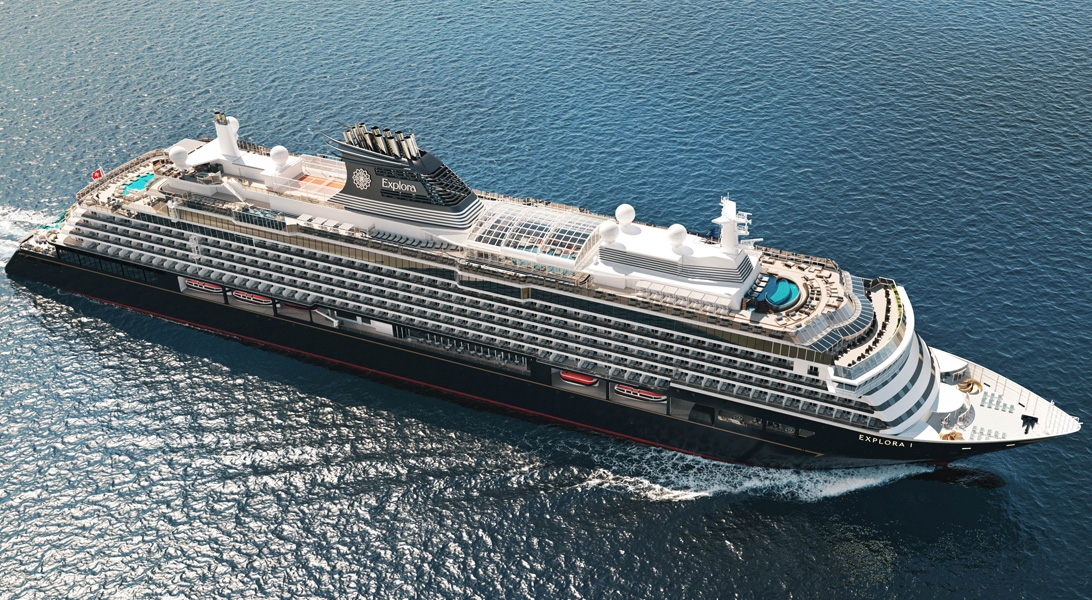











The images shown are for illustration purposes only and may not be an exact representation of what you find on the ship.
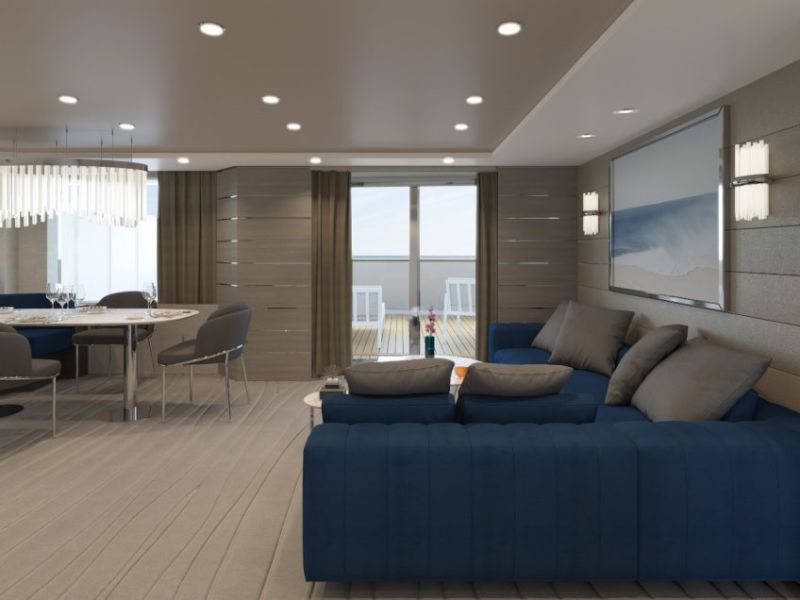
| Grade Code | From | To | |
| CR | Cocoon Residence | £35,995 | £44,650 |
Our Cocoon Residences are amongst the most spacious of our residences, with an expansive sun terrace on the ship’s coveted aft deck.
Features
Outdoor
Bedroom
Bathroom
Stats
*All images are a combination of photography and artist renderings.
The artist representations and interior decorations, finishes, and furnishings are provided for illustrative purposes only.
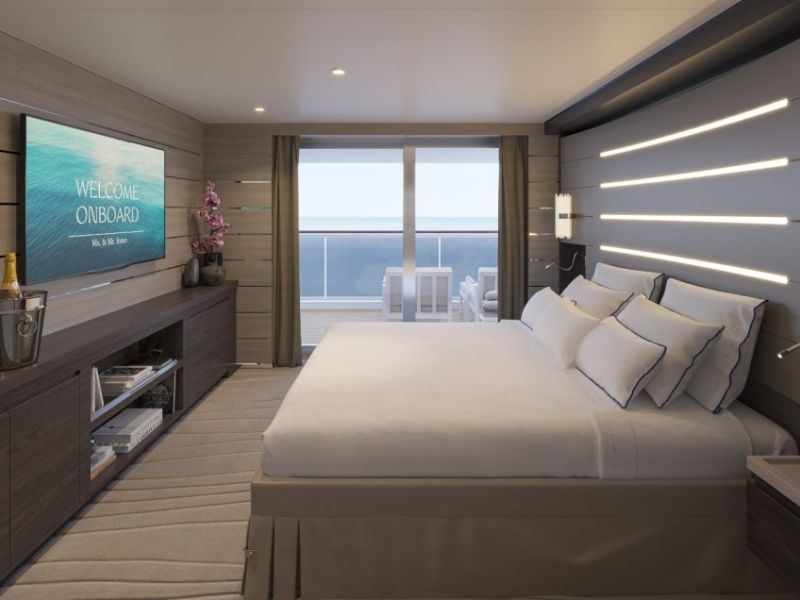
For a true sense of being at home at sea, experience the sweeping decks and effortlessly elegant spaces of the Cove Residences.
Features
Outdoor
Bedroom
Bathroom
Stats
*All images are a combination of photography and artist renderings.
The artist representations and interior decorations, finishes, and furnishings are provided for illustrative purposes only.
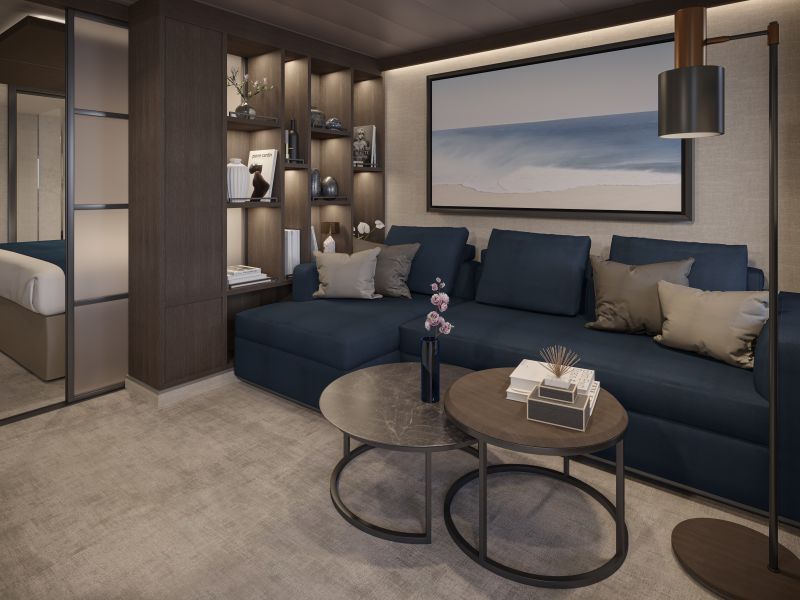
Flooded with light from the floor-to-ceiling oversized windows, the Deluxe Penthouses offer elegant accommodation and a stylish living area, a neat work space and a separate dining area for four.
Features
Outdoor
Bedroom
Bathroom
* Some suites feature bathtubs
Stats
*All images are a combination of photography and artist renderings.
The artist representations and interior decorations, finishes, and furnishings are provided for illustrative purposes only.
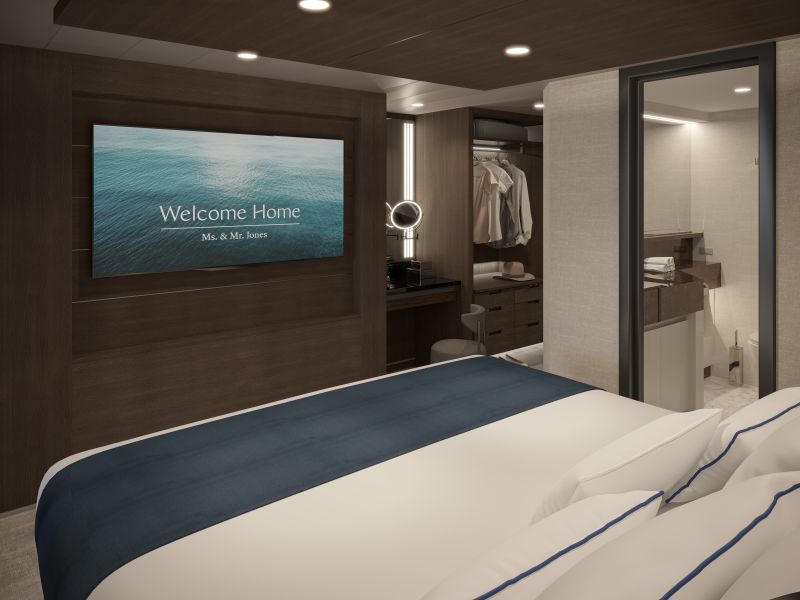
| Grade Code | From | To | |
| GP | Grand Penthouse | £19,040 | £23,650 |
The most spacious of our penthouses, the Grand Penthouses offer elegant spaces with a separate stylish living area, a neat work space and a separate dining area for four, whilst the private sun terraces allow guests to unwind and savour the ocean, in the company of friends or one another.
Features
Outdoor
Bedroom
Bathroom
Stats
*All images are a combination of photography and artist renderings.
The artist representations and interior decorations, finishes, and furnishings are provided for illustrative purposes only.
Some suites feature bathtubs and accessible facilities:
Grand Penthouse Accessibility Features
Accessible Grand Penthouse Stats
*Features may vary by suite.
Please inform your Travel Advisor or the Explora Experience Centre Ambassador of your requirements when reserving your journey.
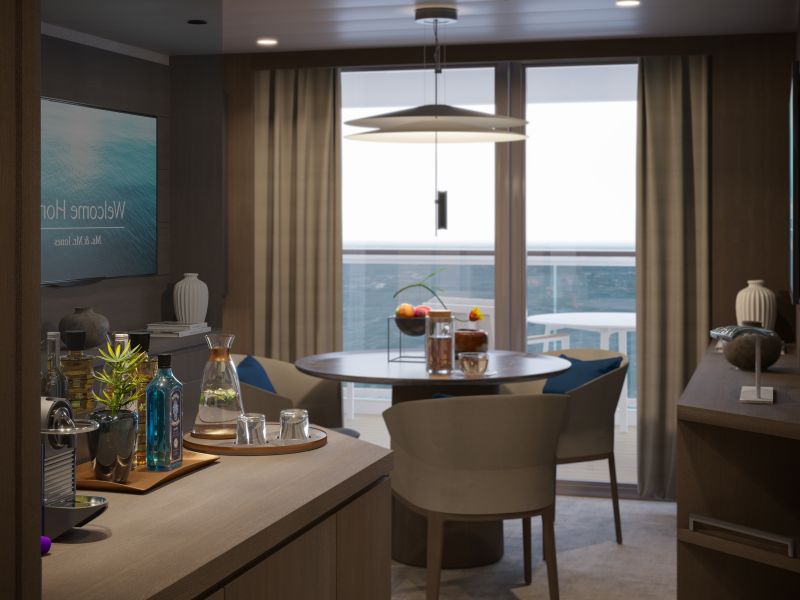
Our Ocean Grand Terrace Suites offer a more spacious private sun terrace, allowing guests to savour the ocean from the comfort of their daybed.
Features
Outdoor
Bedroom
Bathroom
*All images are a combination of photography and artist renderings.
The artist representations and interior decorations, finishes, and furnishings are provided for illustrative purposes only.
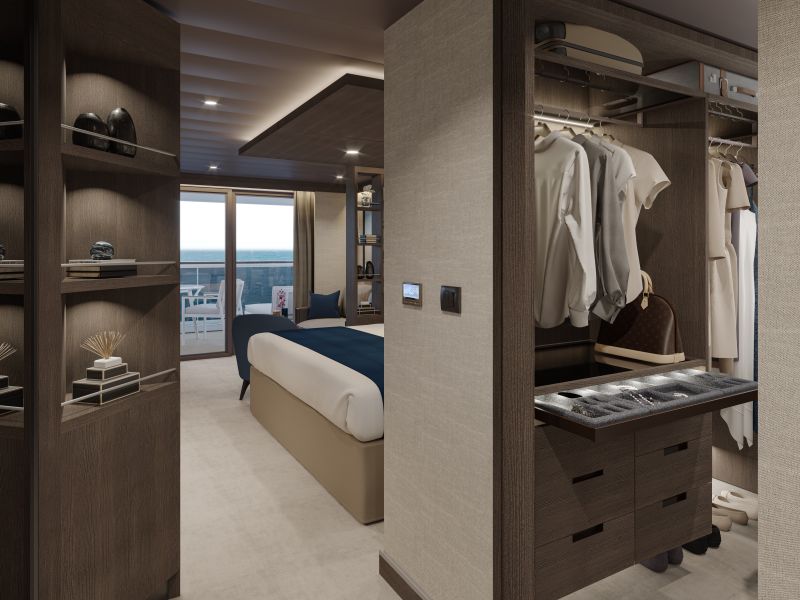
Our Ocean Terrace Suites elegantly combine space and light.
Features
Outdoor
Bedroom
Bathroom
Stats
*All images are a combination of photography and artist renderings.
The artist representations and interior decorations, finishes, and furnishings are provided for illustrative purposes only.
Some suites feature bathtubs and accessible facilities:
Ocean Terrace Suite Accessibility Features
Stats
*Features may vary by suite.
Please inform your Travel Advisor or the Explora Experience Centre Ambassador of your requirements when reserving your journey.
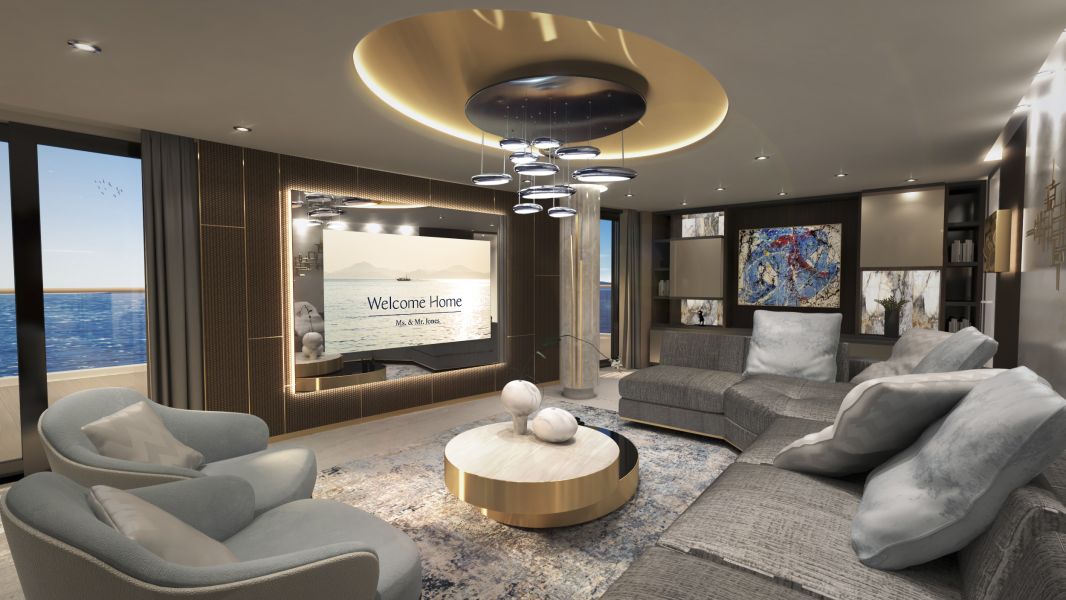
The iconic Owner’s Residence creates the largest living space on-board, with multiple harmonious spaces in which to relax, entertain and unwind.
Stand in awe of the panoramic ocean views from your private outdoor terrace – extending over the full ship's width – with a spacious infinity whirlpool, and enjoy intuitive, intelligent, dedicated private butler services by the Residence Manager.
Every aspect of the design of our Owner’s Residence reflects the meticulous curation of all details, conscious at all times of our commitment to sustainability.
Features
Bedroom
Outdoors
Bathroom
Butler Service
Stats
*All images are a combination of photography and artist renderings.
The artist representations and interior decorations, finishes, and furnishings are provided for illustrative purposes only.
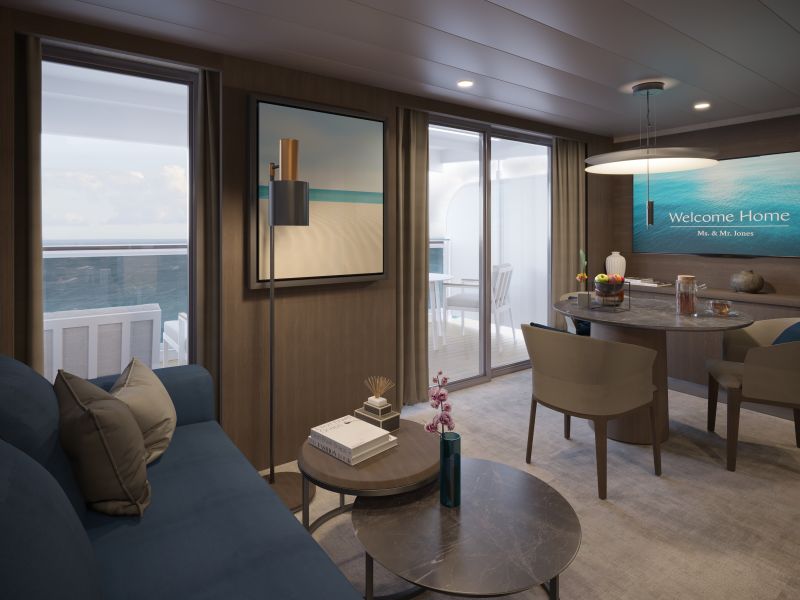
Each of our Penthouses offers a spacious living area, a neat work space and a separate dining area for four, allowing guests to entertain others or retreat in style as they see fit.
Features
Outdoor
Bedroom
Bathroom
Stats
*All images are a combination of photography and artist renderings.
The artist representations and interior decorations, finishes, and furnishings are provided for illustrative purposes only.
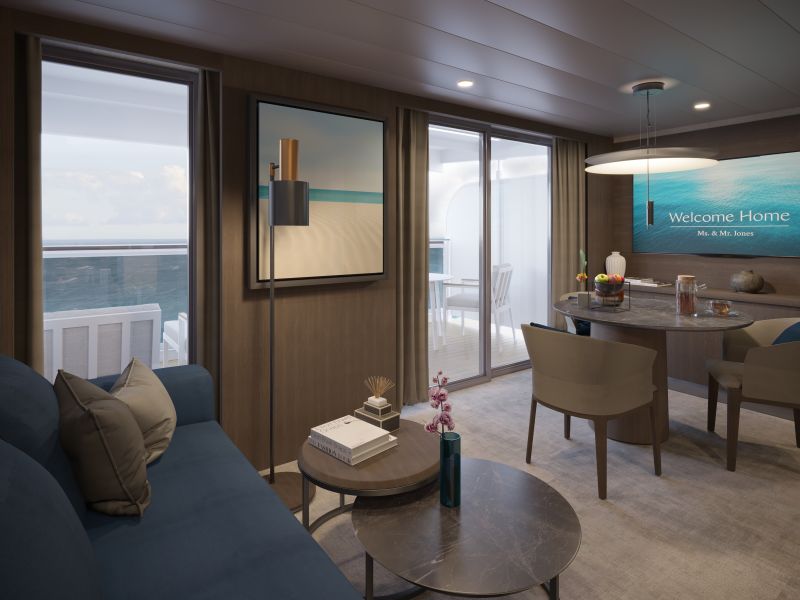
| Grade Code | From | To | |
| PP | Premier Penthouse | £18,060 | £22,450 |
These light-filled, luxurious Premier Penthouses are designed for withdrawing in style or entertaining other guests – at a dining table laid for four, in the stylish living area and on the private sun terrace with a second seating area and daybeds or sunbeds overlooking the ocean.
Features
Outdoor
Bedroom
Bathroom
Stats
*All images are a combination of photography and artist renderings.
The artist representations and interior decorations, finishes, and furnishings are provided for illustrative purposes only.
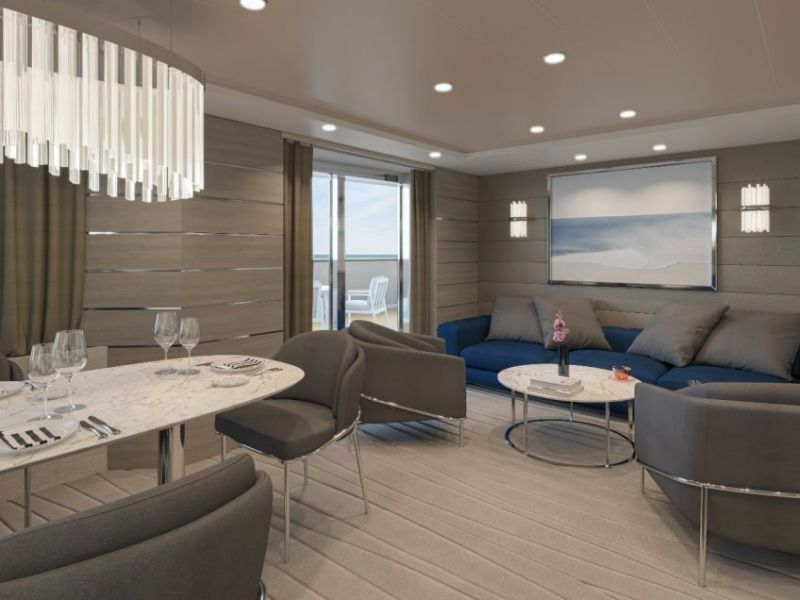
| Grade Code | From | To | |
| RR | Retreat Residence | £21,205 | £26,300 |
Our luxurious Retreat Residences offer oversized floor-to-ceiling windows leading onto a spacious sun terrace with a private whirlpool, whilst a Residence Host providing butler services is on hand for our guests’ every whim, as well as a dining area for up to four guests, a separate living area and calm workspace.
Features
Outdoor
Bedroom
Bathroom
Stats
*All images are a combination of photography and artist renderings.
The artist representations and interior decorations, finishes, and furnishings are provided for illustrative purposes only.
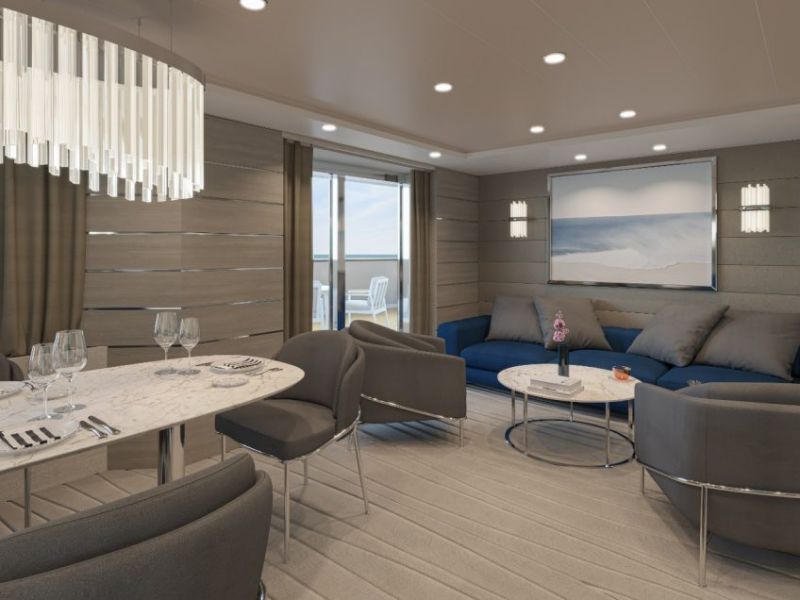
| Grade Code | From | To | |
| SR | Serenity Residence | £32,300 | £40,050 |
Abundant in space and light, the elegant Serenity Residences offer a large living area, a dining area for six, an adept desk area, a luxurious marble bathroom with a bathtub and separate shower, and a Residence Host providing butler services.
Features
Outdoor
Bedroom
Bathroom
Stats
*All images are a combination of photography and artist renderings.
The artist representations and interior decorations, finishes, and furnishings are provided for illustrative purposes only.
The images shown are for illustration purposes only and may not be an exact representation of what you find on the ship.
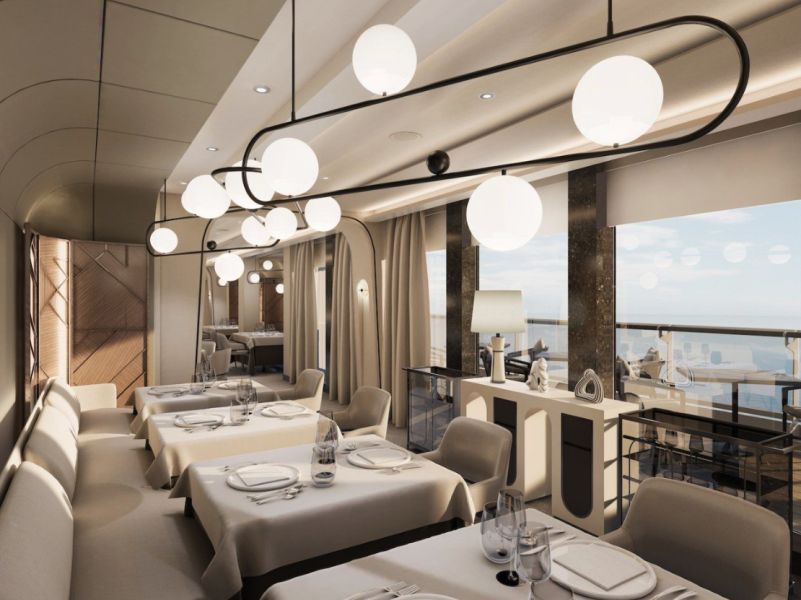
A Gastronomic Adventure
As our signature fine-dining experience, Anthology elevates Italian cuisine, offering an unparalleled gastronomic adventure.
On the menu, created by our esteemed Head of Culinary, Franck Garanger, each dish is a celebration of Italy’s finest regional ingredients and flavours.From the renowned flavours of Piedmont’s truffle-rich countryside in the North, to the famed specialities of Italy’s South, each plate celebrates the local produce and time-honoured techniques of every region in Italy.
The menu is an ingenious display of creativity – a vibrant tapestry of regional flavours and authentic ingredients which invites guests to immerse themselves in the different styles and tastes of Italy’s universally loved cuisine.
Contemporary, Refined Elegance
With the opportunity to dine outdoors, Anthology offers an intimate yet elevated dining atmosphere with flawless, attentive service.
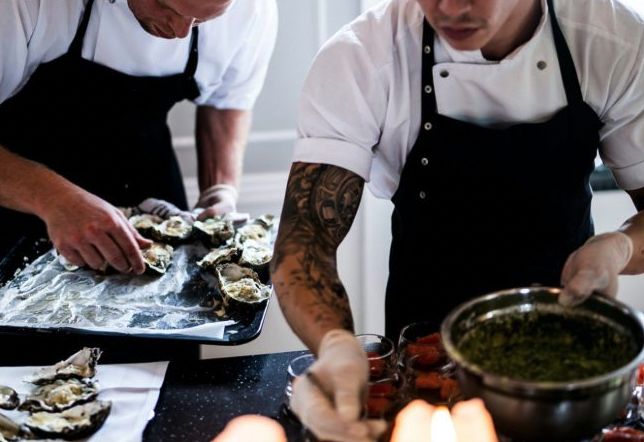
Private dining and culinary classes.
The Chef’s Kitchen is an immersive experience held in an ocean-front private kitchen setting for 12 guests. Our team of culinary experts guides our guests through a journey of discovering new ingredients, flavours, textures and cultures, regardless of their cooking skills level.
The experience continuously evolves around the regions visited by the ship, and will also extend ashore with visits to local markets and hand-picked producers. The adjacent private dining room is the perfect venue for guests to celebrate their new skills, savour the incredible dishes they created, paired with superb wines from our sommeliers.
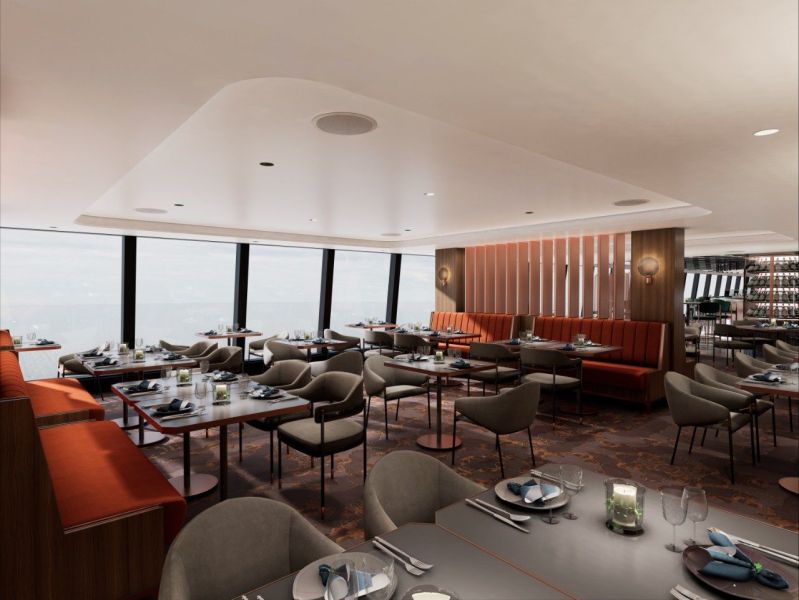
An Emporium is defined as a place offering many different things, a place for merchants to showcase their best produce (coming from the Greek word emporion - ἐμπόριον).
Emporium Marketplace is an effortless all-day dining restaurant, bringing the global culinary talent and produce to the fore to offer diverse cuisines with a focus on quality produce, inspired by local destinations, and allowing guests total flexibility in what they choose to eat, and when.
Bathed in natural bright light, several separate cooking stations evolve throughout the day. White marble and minimalist design take centre stage, allowing the freshest ingredients to make the food the true hero of this elegant relaxed space.
Features include sushi, fresh seafood and a daily rotisserie offering grilled, roasted, and slow-cooked meats. Pasta is cooked to order, and freshly baked pizzas and bread are on offer as are home-made sandwiches. The charcuterie, fromagerie, boulangerie and patisserie stations enhance the experience. Fresh juices, smoothies and acai bowls are provided during breakfast.
A selection of wines, champagne and beverages are available to complement meals throughout the day.
Signature Dishes at Emporium Marketplace
Handmade tortelloni, ricotta cheese, spinach, tomato-sage butter
It’s often the simplest dishes that take great skill – this classic is no exception. Tortelloni are ring-shaped, filled pasta ‘pockets’ that originate in Italy’s Emilia-Romagna region. Made onboard from scratch every day in the authentic Italian way, it’s a process best described as art-meets-science. Carefully sourced flour is used to make dough that has the correct degree of elasticity; this is essential to giving the tortelloni their mouth-watering light and silky texture before being filled with ricotta and spinach, then gently coated in tomato-sage butter.
Plant based chia yoghurt
Our curated chia yoghurt is daily made from homemade cashew milk, creating a fusion of delicious creamy flavours for guests to enjoy each morning.
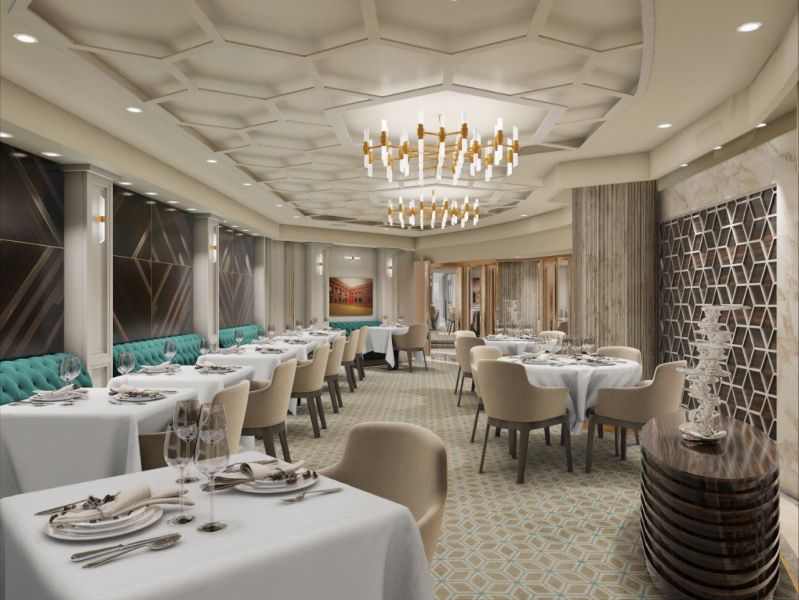
A global tasting tour to French-inspired international cuisine.
A common red thread that unites international flavours with a French influence. Fil Rouge is a sophisticated and intimate restaurant, offering a global tasting tour of French-inspired international cuisine, where guests are encouraged to take their time to appreciate both the cuisine and the intimate ambience.
A universal, timeless dining experience, Fil Rouge is a visual articulation of the fundamentals of elegance. Intricate hexagons representing the simplest expression of perfection contrast with clean white walls adorned with inspiring works of art.
An elegant dessert cart tempts with the freshest creations served tableside, and a superb wine selection showcases the best of both the Old and New World vineyards.
Signature Dish at Fil Rouge
Tuna tataki, crispy tomato-olive tart, vegetables, vanilla white pepper
Sustainably raised and caught in the open Mediterranean Sea close to the Cartagena Bay, the Mediterranean bluefin tuna sourced by our chefs is some of the best grade to be found anywhere in the world for sashimi.
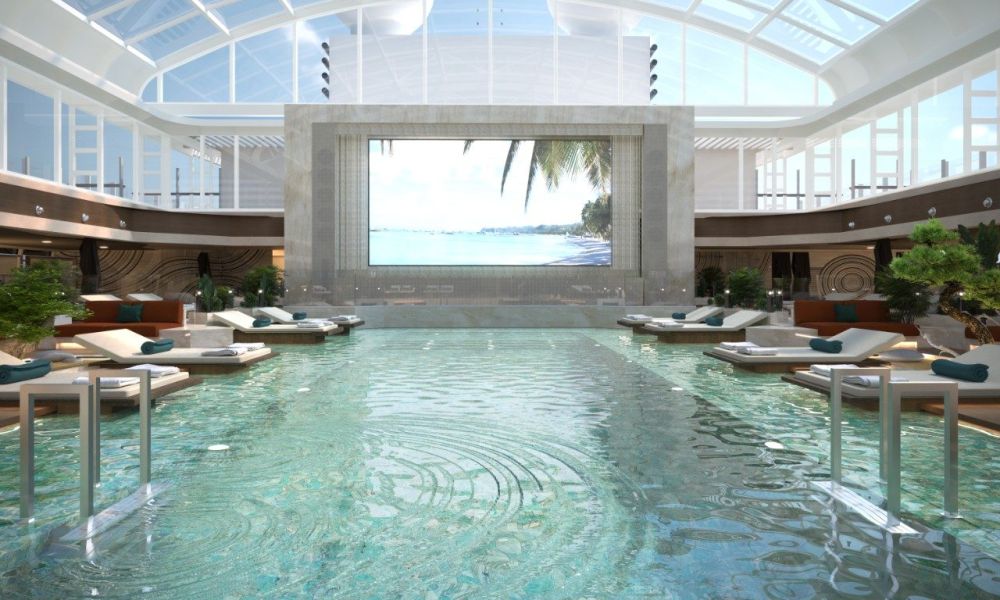
Authentic French and Italian indulgences in a relaxed weather-protected poolside environment.
Set in the relaxed, weather-protected poolside Conservatory, this is the place to treat yourself to authentic French and Italian indulgencies.
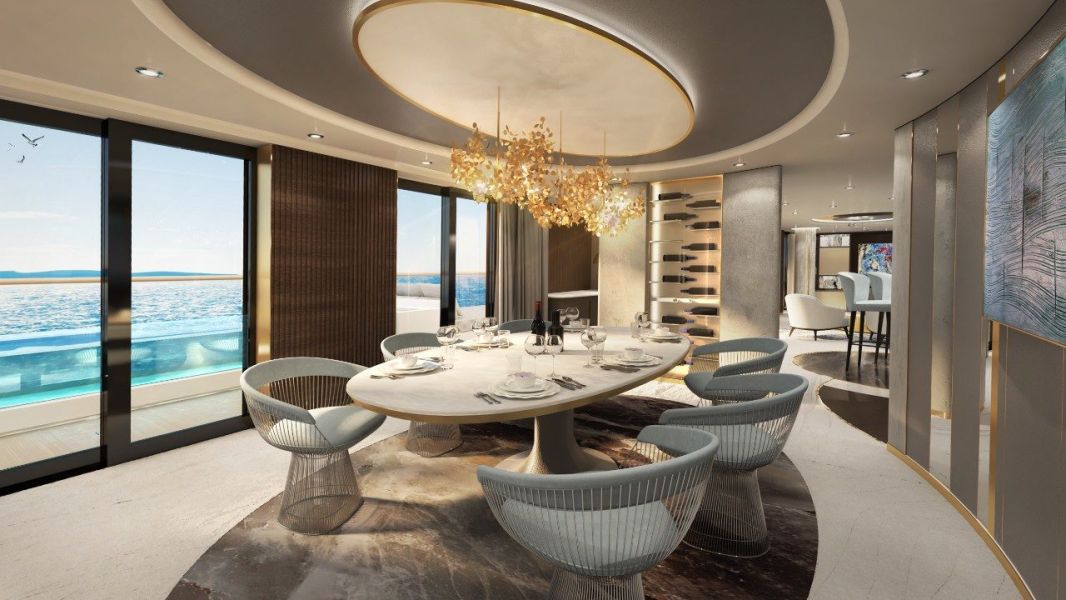
Our guests can enjoy an array of cuisines at any time, day or night, in the comfort of their suite or private terrace. Available 24 hours, the menu offers guests a taste of each of our unique dining destinations.
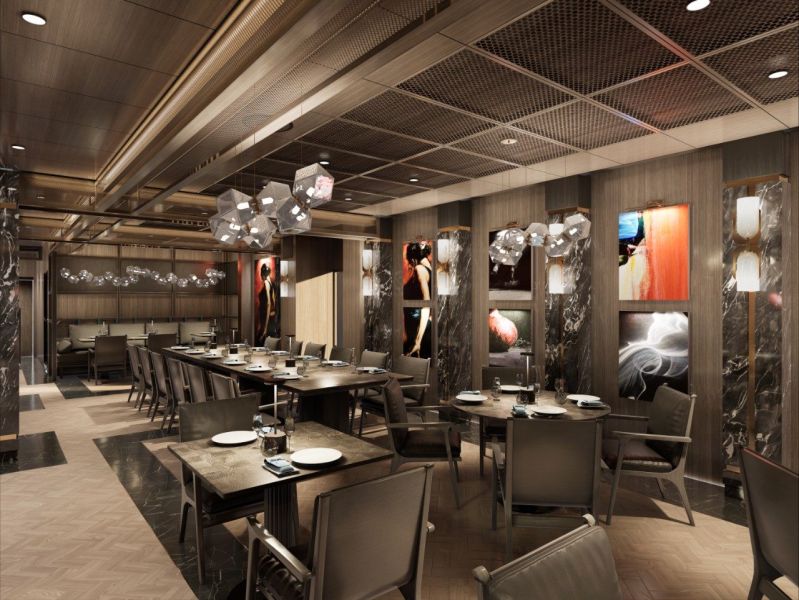
Inspired by the marbling found in only the finest beef, Marble & Co. Grill serves exceptional cuts, personally sourced and sustainably farmed.
The menu has been designed to take guests on a journey of discovery, with sumptuous, rare meats sourced for their flavour and distinctive provenance. More than a steakhouse, Marble & Co is the realisation of a vision where careful attention to ingredients and passion for cooking come together to create a truly special dining experience.
This redefined European steakhouse experience is reflected through the modern, understated yet sophisticated design with soft lighting and relaxed, attentive service. The experience is augmented by an in-house dry ager and a cellar boasting a superb selection of fine wines.
Signature Dishes at Marble & Co. Grill
Grilled prime rib, aged 30-days, cherry tomatoes, Hollandaise sauce
Provenance and quality take centre stage, to create the finest version of a steakhouse classic. From a local producer in Deux Sévres region of the lush Loire Valleé, it’s clear why the famous Jersiaise breed, renowned for its sensational flavour and intense marbling, is one of the most sought-after cuts or prime rib. To truly appreciate this beautiful cut, it is topped simply with cherry tomatoes and a sumptuous Hollandaise sauce.
Crushed fingerling potatoes, Le Beurre Bordier butter from Normandy, Calvisius Oscietra caviar, crème fraîche, chives
A simple dish executed with the finest ingredients. The crushed fingerling potatoes are made with Bordier butter, arguably, the finest butter in the world, served only in the finest establishments. Potatoes are topped with Calvisius Oscietra caviar, known the world over for being some of the best quality caviar available; the caviar is sustainably produced in Italy, in an area rich with fresh spring water, contributing to its high quality and low-salt flavour.
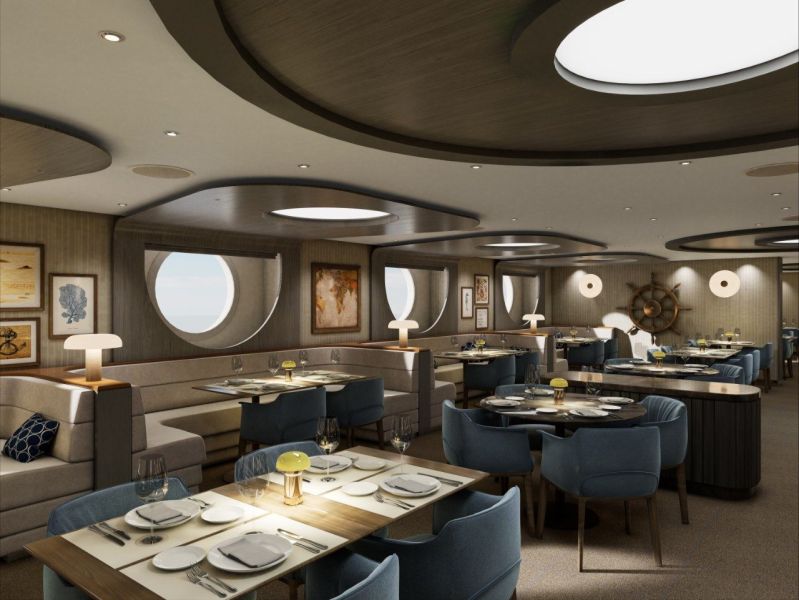
A relaxed celebration of the flavours, ambience and la dolce vita of the Mediterranean.
Inspired by sailings across crystal clear waters, the Med Yacht Club is influenced by sophisticated, beachside Mediterranean restaurants, embracing the varied cuisines of the region.
Effortlessly refined in its design, Med Yacht Club creates a relaxed, convivial atmosphere, where bright sunshine streaming through large portholes and Med-influenced music transport guests on a culinary journey inspired by sea travel.
Inspired by authentic Mediterranean dining, and infusing tastes and textures of Italy, Spain, Greece, France, and North Africa – while incorporating plant-based, vegetarian and wholesome ingredients – the menu of Med Yacht Club serves sharing plates, created with passion, for guests to enjoy with friends and family alike. Each dish is inspired by the most authentic of Mediterranean ingredients and flavours.
Wines will showcase the rich vineyards of the Mediterranean, with fresh juices and cocktails honouring regional ingredients.
Signature Dishes at Med Yacht Club
Grilled octopus, San Marzano tomato sauce, Taggiasca olives, green beans, parsley
If ever there were a singular dish to represent the importance province plays in the ingredients used onboard Explora Journeys, then this is surely it. Sharp sundried Taggiasca olives compliment the sweet San Marzano tomatoes, creating a perfectly balanced bed for the expertly grilled, sustainably sourced octopus.
Sweet caprese with cherry tomatoes, strawberries, burrata, pesto
A true representation of the creativity and skill of our chefs, this sweet interpretation of an Italian classic will surprise and delight in equal measure. The finest cherry tomatoes and strawberries create an intriguing base, upon which our burrata sits - made with emulsified burrata cream, and adorned with even more sweet tomatoes and strawberries with a drizzle of pesto from Sicilian Bronte pistachios.
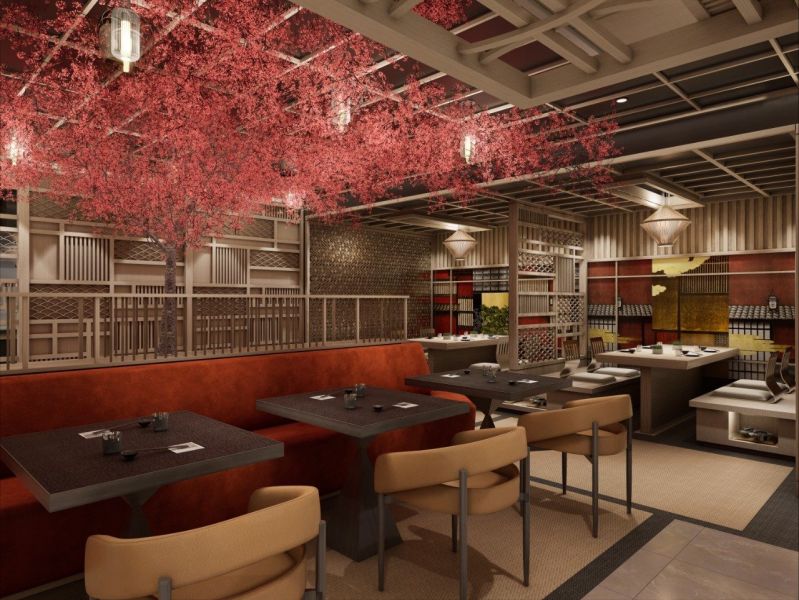
An immersive, authentic dining experience offering the finest Pan-Asian cuisine.
Named after the cherry blossom - the national flower of Japan - and symbolic of renewal and optimism, Sakura offers Japanese, Thai, Vietnamese, and Malaysian flavours for a taste of Pan-Asian cuisine that is both authentic and energising.
The space takes inspiration from Japan’s rich cultural heritage of tradition and rituals blended with distinct Japanese design cues, to create an intimate and welcoming space. The ancient tea rooms of Kyoto provide the inspiration for Sakura, where dark wood frames lead your eye to traditional Japanese ceiling details, adorned with a cherry blossom tree canopy which shrouds diners with a warm atmosphere of festoon lights.
Authenticity extends to the kitchen, where chefs follow traditional techniques – using only the very best carefully sourced ingredients – to ensure a truly pan-Asian experience.
Expansive ocean views, a Sake sommelier, Asian-influenced beverages - including a curated selection of sakes and shōchū - combined with seamless service and modern Asian music create a dynamic dining experience.
Signature Dishes at Sakura
Wagyu beef tataki, wakame salad, smoked Madagascan pepper
Never cooked or grilled, our sustainably sourced prime grade 5 Japanese wagyu beef is delicately torched by our chefs: this authentic method of cooking ensures that the best qualities of the beef are preserved for the guests’ mouth-watering enjoyment.
Makrut lime pavlova, mango brunoise, passion fruit, mango sorbet
A fusion of east and west, this unique interpretation of pavlova is a perfect representation of the passionate, creative expertise and multicultural diversity of our talented pastry team .
Kale salad
Another example of our chefs’ ingenuity, a humble kale salad is transformed into culinary art for our guests to enjoy. This superfood salad is not simply dressed, but cured with the finest quality of sesame dressing for a rounded flavour - it represents a fusion of clean living with the flavours of Asia.
The images shown are for illustration purposes only and may not be an exact representation of what you find on the ship.
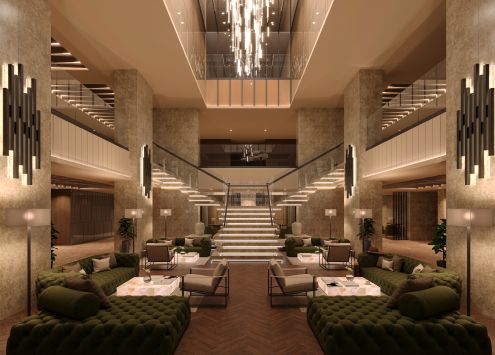
A centrally-located social bar and lounge.
A central gathering social bar and lounge, amongst high-end boutiques, provides the ideal spot to enjoy refreshments throughout the day and night.
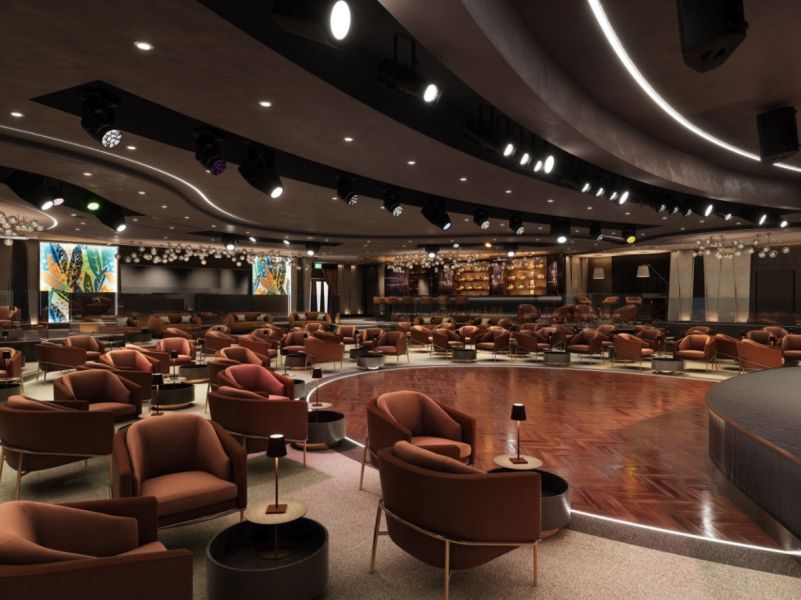
Mixology, enrichment and entertainment continuously evolving throughout the day.
The most spacious onboard lounge features mixology specialists, enrichment activities and cabaret-style entertainment daily. This venue is designed to continuously evolve and transform throughout the day along with the ocean journey.
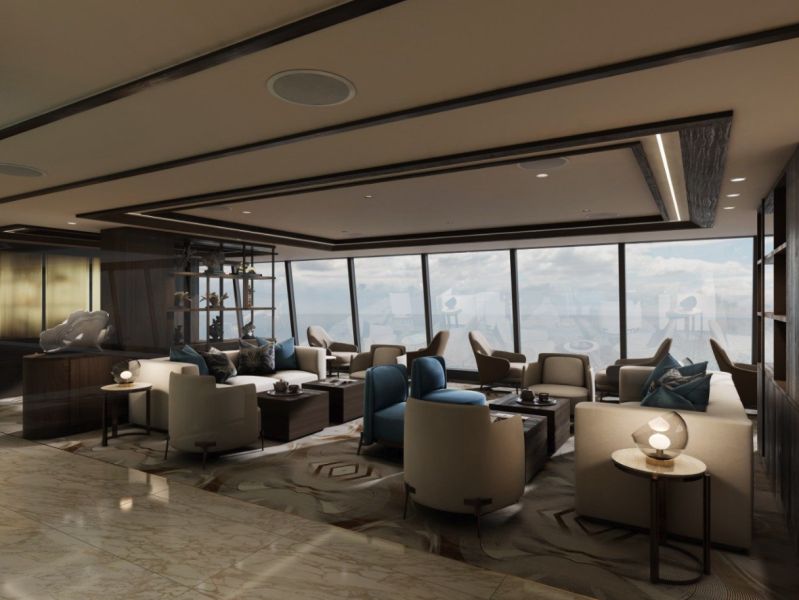
A luminous lounge offering spectacular 270-degree views of the ocean, a spectacular backdrop to informal drinking and dining.
Explora Lounge is a central meeting place bathed in natural bright light, where guests can watch the world sail by as they enjoy light meals, snacks, and traditional afternoon tea. Perfect for a quiet moment to read, work or sip a coffee, or simply admire the beautiful sea-facing views which instantly ease the mind into a calming space.
Cool and soothing background music during the day is transformed into a jazz and piano bar at night. This is the perfect soundtrack to your journey paired with a sunset aperitivo in hand.
Guests can enjoy light meals, snacks, traditional afternoon tea, along with inventive modern cocktails barista-made coffees, loose leaf teas, smoothies, and fresh pressed juices.
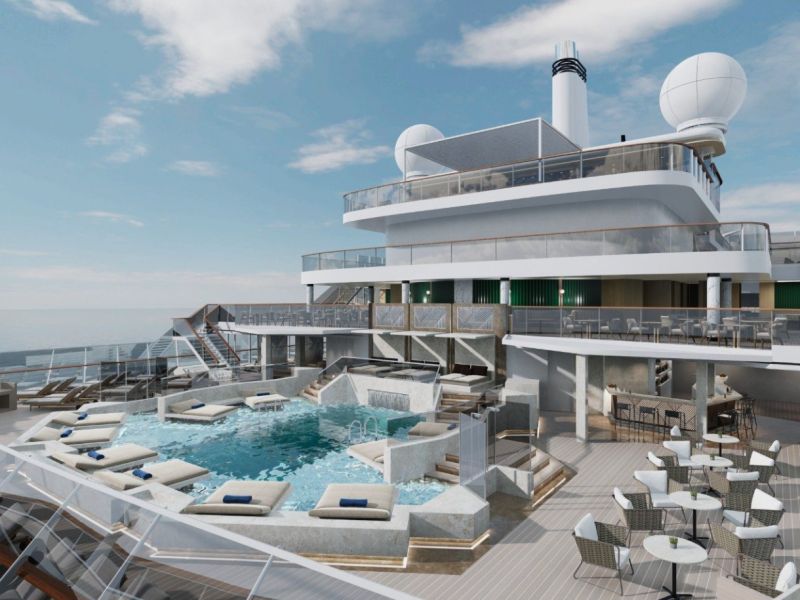
An all-day pool and lounge setting for a seaside escape.
An all-day lounge next to the infinity pool, ideal for a seaside escape offering chilled beach club vibes, with low background music by day and acoustic musicians and DJs as the sun sets, continuing throughout the evening.
Outdoor dining is available from nearby Sakura restaurant in bento boxes, conveniently served seated at a table, a lounger or a poolside sunbed.
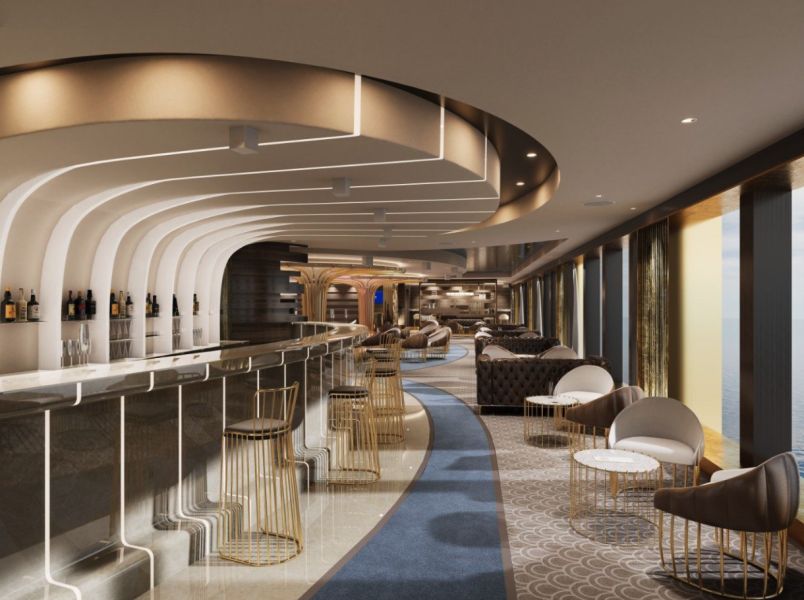
All-day lounge for a seaside escape opening up to the Astern Pool.
Astern Lounge is the social hub of the journey, with a collection of events and rituals suited to every taste.
Effortlessly transitioning throughout the day, Astern Lounge hosts live music, DJ sessions and enrichment insights. Coming to life from sundown, the lounge perfects the aperitivo through a ritual of celebrating the golden hour, complemented by live entertainment.
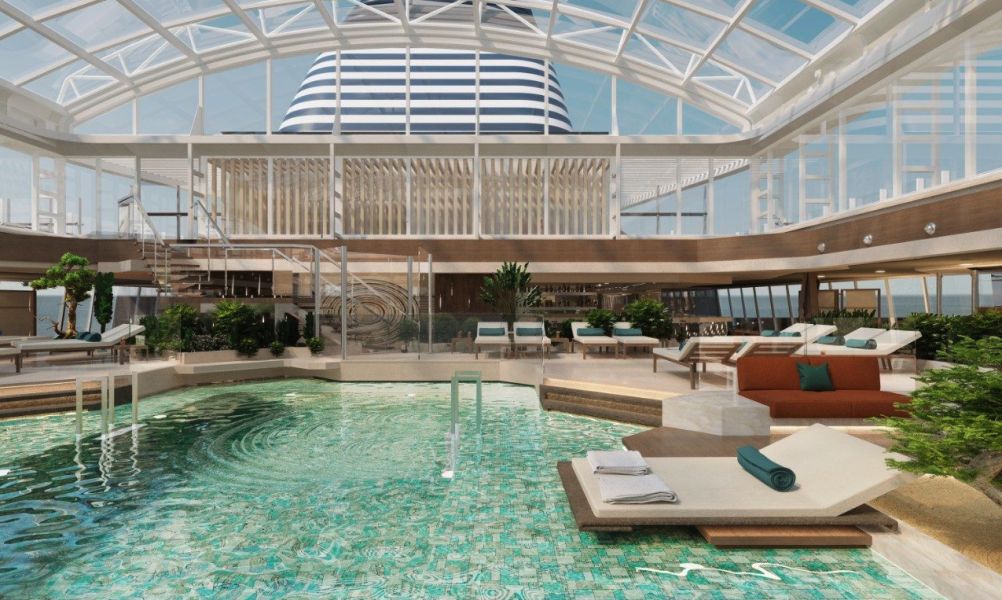
A weather-protected all-day poolside lounge
The Conservatory is a weather-protected poolside lounge by day. By night, it turns into a cinema experience under the stars. A relaxed, calming venue to unwind and enjoy cocktails, with light, lively background music playing throughout the day.
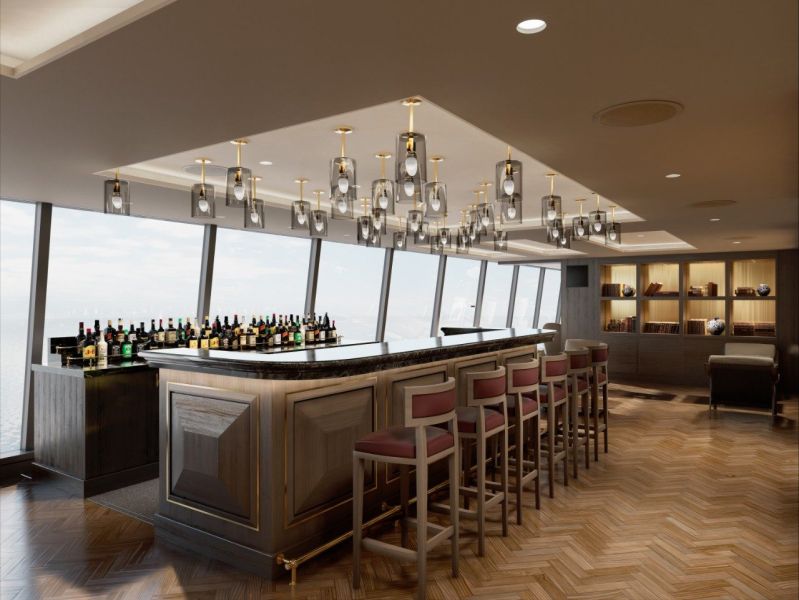
A refined tour of the global whisky regions.
Set within the Explora Lounge, Malt offers a refined tour of the global whisky regions, including some of the rarest whiskies. Complete with a walk-in humidor, cigar expert and a dedicated outdoor cigar-smoking terrace.
A menu with an emphasis on dark brown spirits
Features an outdoor smoking area for guests to enjoy their hand-rolled cigars*, selected with the guidance of our cigar expert
Signature whiskey-based cocktails curated exclusively for Explora Journeys
Low jazz background music
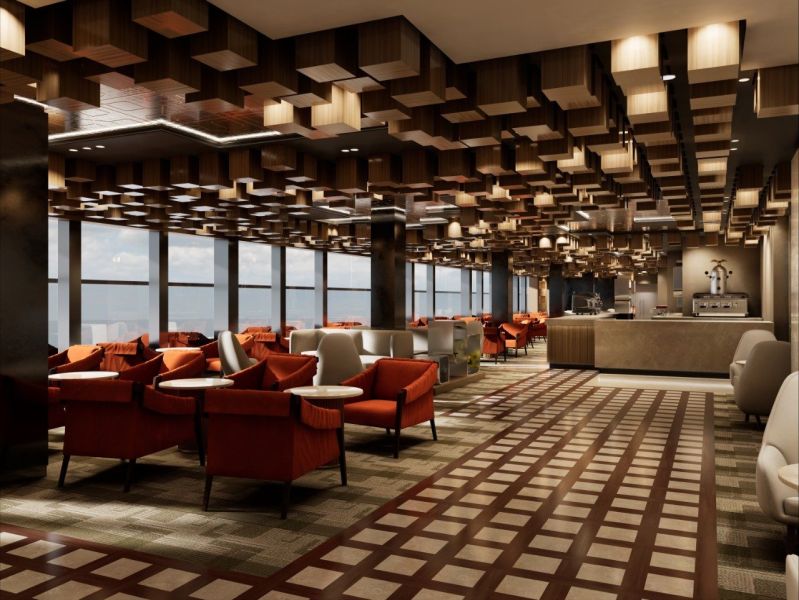
Bustling European all-day café culture brought to the oceans of the world.
A thick luxurious layer of crema nods to the freshness of an espresso and aptly lends authenticity and sophistication to a café at the centre of life on board.
Inspired by modern European café culture, Crema Café has unpretentiously stylish interiors with comfortable lounge seating, featuring sophisticated reading material and art set against uninterrupted views of the sea. A place designed to meet, discuss, unwind, taste and indulge, where like-minded guests gather to mingle and converse.
Coffee is chosen by selected connoisseurs who have travelled the world exploring fair-trade coffee origin, character, and strength. Discover the refined methods of brewing coffee from skilled baristas, taste high-quality loose-leaf teas with an on-hand tea expert, or enjoy refreshing cold-pressed juices. A jewellery-shop-like display showcases pastries, cakes, desserts and dry sweets including madeleine, cannelés, biscotti, navette sandwiches as well as gelato flavours that evolve throughout the day.
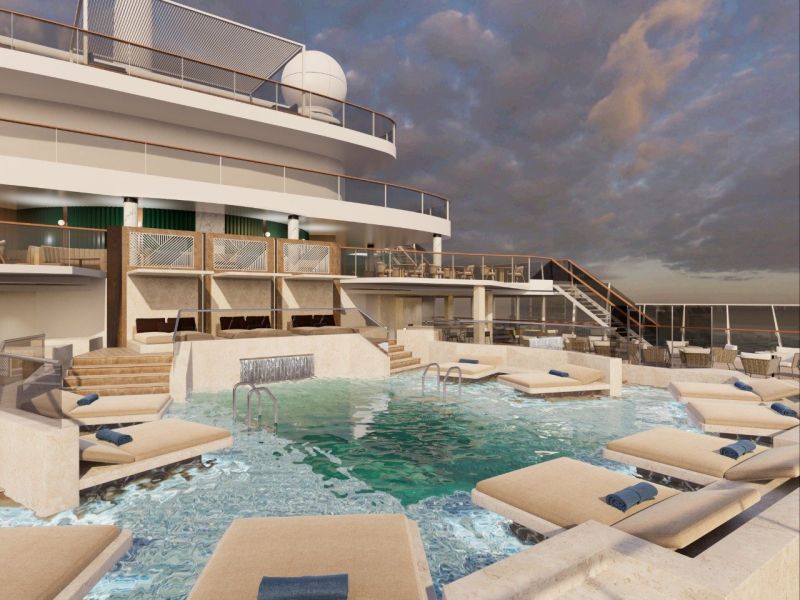
An intimate pool with a chilled vibe throughout the day.
Here, guests can enjoy the sun, sea and serenity along with sunny, sparkling and colourful drinks.
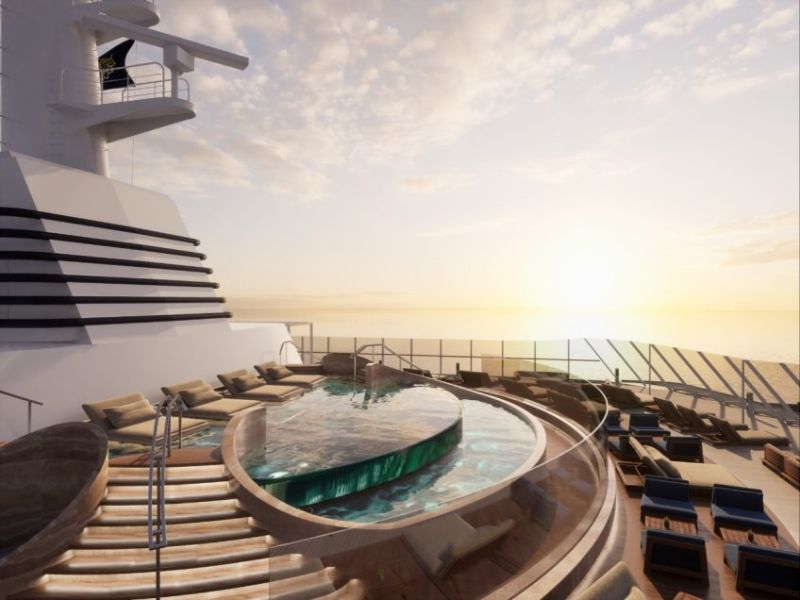
A panoramic adults-only pool and lounge experience.
Inspired by the Ancient Greek god of the sun, and also literally meaning “sun” in Greek, this adults-only area is indeed the sunniest venue onboard, panoramically facing forward on deck 12. Enjoy lying by the pool or lounging throughout the day as you watch the ship sail through the sea.
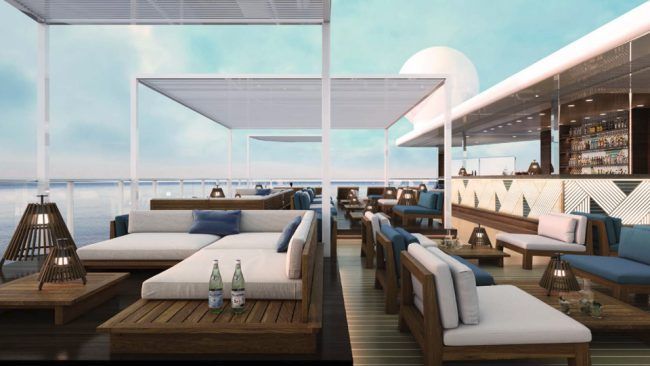
A panoramic outdoor lounge setting, ideal for soothing cocktails and infinite views.
Set on the ship’s highest point, on deck 14, this panoramic outdoor lounge setting is ideal for soothing cocktails and infinite views.
The images shown are for illustration purposes only and may not be an exact representation of what you find on the ship.
The images shown are for illustration purposes only and may not be an exact representation of what you find on the ship.
| 20 nights aboard the EXPLORA I | |||
| A complimentary welcome bottle of champagne upon arrival | |||
| A complimentary bottle of wine and a bottle of spirit of the guests’ choice upon arrival | |||
| Complimentary dining in all restaurants, excluding Anthology | |||
| In-suite dining | |||
| Complimentary unlimited beverages, fine wines and premium spirits, speciality coffees, teas and soft drinks available anytime, including in-suite mini-bar* | |||
| Access to the spa thermal area | |||
| Wellbeing and fitness programmes on board and at the destinations | |||
| All on-board gratuities | |||
| Complimentary Wi-Fi throughout the ship | |||
| Shuttle services from port to city centre (where required/available) | |||
| Port Taxes and Fees | |||
 | ABTA and ATOL Protection* | ||
Date 16th Aug 2025 |
Nts 20 |
Balcony  |
Suite £18,060pp |
Date 16th Aug 2025 |
Nts 20 |
Balcony  |
Suite £18,060pp |
| Suite staterooms from | £18,060pp | ||
| PP | Premier Penthouse | £18,060pp | |
| GP | Grand Penthouse | £19,040pp | |
| RR | Retreat Residence | £21,205pp | |
| SR | Serenity Residence | £32,300pp | |
| CR | Cocoon Residence | £35,995pp | |
Fusion Cruises when selling travel arrangements is a trading name of The Midcounties Co-operative Ltd. Fusion Cruises is an Accredited Body Member of Midcounties Co-operative Travel Consortium. (ABTA:P6652, ATOL:6053).
Book with Confidence. We are a Member of ABTA which means you have the benefit of ABTA’s assistance and Code of Conduct.
Some of the flights and flight-inclusive holidays on this website are financially protected by the ATOL scheme but ATOL protection does not apply to all holiday and travel services offered on this website. This website will provide you with information on the protection that applies in the case of each holiday and travel service offered before you make your booking. If you do not receive an ATOL Certificate then the booking will not be ATOL protected. If you do receive an ATOL Certificate but all parts of your trip are not listed on it, those parts will not be ATOL protected. Please see our booking conditions for information, or for more information about financial protection and the ATOL Certificate go to: www.caa.co.uk
